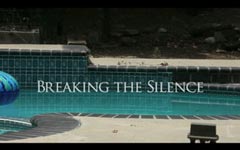Recent cool research studies around the world have been looking into eye movement tracking of autistic people as they point to letters to spell or as they read, to see if this gives a clearer indication of their level of understanding and expression of their own ideas. Last week, a significant study done by researchers from the University of Virginia tracking the eye movements of 9 autistic typers was published in Nature Magazine, a respected scientific journal. I suggest you take a look at it. I hope this study prompts many more. The researchers tracked the participant’s fixation on letters that were then used to spell words to indicate the intentionality and the reliability of the communication.
The fact is that the communicative ability of people with autism has to be looked at in creative ways like this because our nervous systems have a tendency to betray us, especially in hostile testing environments with testers who prefer to prove stupidity over intelligence. In autism our bodies easily make us look stupid, but that’s the lazy place for a tester to stop. Stephen Hawking didn’t move like a physics genius. In fact, he didn’t move at all, but because not talking is not the same as not thinking, his mind was lively, and given the means to communicate, he proved himself over and over. I’m grateful to Dr. Jaswal for his research as a first step into a much needed understanding of autism. More research, including longitudinal observation, interviews, happiness measurements (pre and post communication), and motor assessments, will create a fuller picture.
Autism is a motor disability. Talking is motor, looking is motor, pointing is motor. These skills develop gradually and differently for a person with autism. One possible research idea is to see if eye tracking improves in an autistic individual from the first lesson in pointing to communicate over time as their typing skills improve. I am strongly convinced tests would demonstrate progress. Many autistic children have trouble focusing their eyes, they may take in too much or hyper focus on one small item, and learning to look at and scan an array of letters to communicate improves that skill in a purposeful and meaningful way.
I am pleased to see people begin to research in ways that try to find intelligence. There is so much wrong with the angry pseudo-science of those who refuse to even consider the possibility that they might be wrong. It wouldn’t matter if it were merely an academic debate, but real lives are impacted, and that is not merely an academic exercise.



